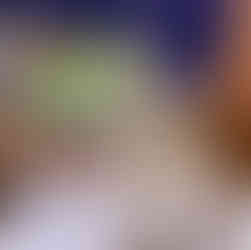Tagala Primary School
- FemEng in Botswana

- Jun 10
- 3 min read

On Tuesday we visited the Tagala Primary School. An early start at 7:30am allowed us to first meet with the head of school and the teachers. The school agreed for us to spend 6 hours with 160 girls. We were also joined with 4 female volunteers from the UoB and BIUST. On this day we covered several workshops; balloon car, prosthetic hand, straw rockets, ping pong ball run, hand-held radio game and used a fabric maze for wireless power transfer demonstration.
We split ourselves into 4 groups as we were allocated 4 classrooms. This has allowed all members of the team to be more hands-on with smaller groups. The first workshop that we have not introduced before, was the prosthetic hand. This workshop touches upon the biomedical engineering field. The girls got to make their own prosthetic hand from paper, straws and string. By making their own prosthetic hand, they learnt about the different tendons and knuckles and their respective movement and their importance.
Throughout this workshop, the different materials that are usually used for prosthetics were discussed. All of the students thoroughly enjoyed this workshop, as more than half of the class raised their hand when asked if they wanted to be a doctor before we introduced the different types of engineering at the beginning of the day. After this workshop, some students started to reconsider their preference of their future careers.
Prosthetic hand models that were finished by the students in Tagala Primary School
After the balloon cars and the ping pong ball run workshops, the students got to build paper straw rockets. Here, Newton's Third Law of Motion was reintroduced, when relating the thrust of the rockets to the upwards motion of the rocket during lift-off. The pupils used two strips of paper, a pencil and a straw to build the rockets as seen in the picture. We encouraged the pupils to think about the air resistance, aerodynamics and balance of their rockets and after a couple of discussions, all the students understood the need for the body of the rocket to be smooth, for the tip of the rocket to be sharp and for the need of the fins.
At the end of the workshop, we had the students compete against each other, which encouraged more creative designs of their rockets in order to achieve the best performance of their rockets. During this workshop, it was very encouraging to see that many students fully redesigned their rockets when they realised they were not going to work as well as they hoped they would. And the simplicity of the workshop materials allowed them to try several prototypes.
On this day, we have also introduced microwave engineering to the students. The two activities were conducted simultaneously, allowing different groups of pupils to try them both. To introduce microwave engineering, we first described telegraph communication and Morse code, which the pupils did not recognise. Therefore, we had to relate the field of microwaves to TV antennas and Wi-Fi instead. After a brief introduction, the hand-held radio game was explained. This activity involved two groups communicating on the Industrial, Scientific, Medical (ISM) band at 433MHz. Both groups got identical sets of building blocks, and one team got to decide on the design and then had to explain the design to the other group via the radio. As several groups were using the radios at different channels, the pupils got to learn about the interference and other limitations of microwave frequency communications.

The pupils pictured with the fabric maze
Another activity involved the fabric maze demonstrating wireless power transfer that the team was lucky to borrow from Dr Mahmoud Wagih (University of Glasgow). Using antennas with rectifiers (rectennas), the leaking energy from the single-wire transmission line hidden under the maze could be picked up by the rectennas. An LED lighting up was used as an indicator that wireless power transfer was successful. This way, the students got to find the end-point of the wire just using the rectennas without seeing the wire. This activity sparked a lot of interest in students and they were all curious to learn about how the rectennas they were using were different from the antennas they see around their local area.
This school visit was a success, as seen from the letter of appreciation we have received from the head of the school as seen below. After the workshops, more girls started considering a career in engineering, which we were all happy to see.

Letter of Appreciation the team has received after a school visit













Comments